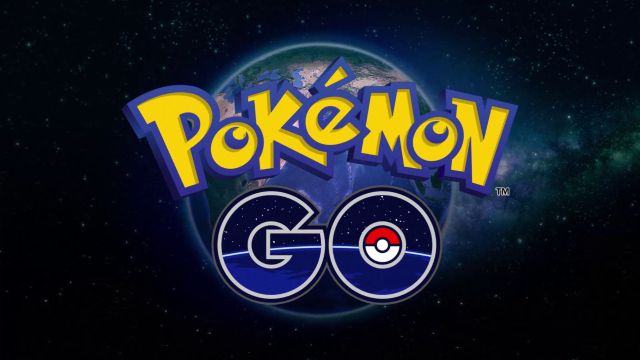We feel your pain.
Pokemon fans around the globe have been waiting with bated breath for the release of Pokemon GO, an upcoming mobile game that promises to fulfill the wildest childhood (and well, maybe adulthood too) dreams of everyone who grew up wishing they could catch Pokemon in real life.
Pokemon GO is a joint venture between The Pokemon Company and Niantic, the company behind the geocaching game Ingress, so it should be no surprise that the folks lucky enough to get accepted into the beta (currently in Japan, as well as in Australia and New Zealand) have explored how the game’s mechanics, down to the way you evolve your Pokemon, all work to make the player explore the world.
Gotta Catch ‘Em All!
Niantic has said in the past that Pokemon will be native to certain “biomes”. What this means is that based on where the player lives, he or she will find certain Pokemon more easily than others. For instance, as a Chicagoan living close to Lake Michigan, I can be fairly confident that it won’t be that hard for me to find, say, a Goldeen or a Magikarp, but since I don’t live near a forest, grass types might be harder to spot near where I live.
This means that in order for a player to find and catch their favorite Pokemon, they will likely have to do some real-world exploration, and that catching ’em all will necessitate a lot of travel.
The leaks from the beta have supported this, with players on the Pokemon GO subreddit noting that it is much easier to find and catch Pokemon in real-world locations that mirror their natural habitats.
Beta Leaks
Despite Niantic’s best efforts, players selected for the field test have inevitably leaked their gameplay to those of us who are frothing at the mouth for more Pokemon GO content. While most of the new content focuses on things like character customization and visual design elements, leakers have also discovered a few other features that encourage players to venture outside their comfort zones a bit.
Watching the video above, you’ll notice the player stopping at certain marked locations and landmarks to pick up items. The game shows an image of the landmark, and then rewards the player. You can see where these locations are on the in-game map, and plan a route there accordingly. It’s a small thing, but in doing this, the developers have created a bridge between the game world and the real one.
Additionally, Niantic had the idea to implement an augmented reality camera in the actual “catching” minigame, so that you can see that cute Squirtle hopping around in your local park before you attempt to catch it for yourself.
Again, these are little things, but these design decisions make it clear to the player that this is not a game to be played simply on their phone, and the release of the Pokemon GO Plus, a wearable that is designed to allow the player to explore and catch Pokemon without even looking at their phone will take this concept even further.
The Evolution of Evolution
One of the most controversial findings from the beta leaks was the discovery that there appears to be, at present, no way to evolve Pokemon by leveling them up. In Pokemon GO, players evolve their team by collecting “Evolution Shards” which can be earned by catching the same Pokemon multiple times.
Now, on the surface, this seems to run counter to, well, pretty much everything the Pokemon series stands for. It forces players to catch-and-release Pokemon to grow their team, instead of focusing on one Pokemon, and training it through battle. It’s a major change. In addition, at least at this point in time, the “catching” minigame does not involve a Pokemon battle– another key change to the Pokemon formula that proved controversial.
That said, these changes are necessary for a game like this, and works to bolster the core gameplay element of exploration.
In a game like this, one that necessitates travel, a more drawn-out Pokemon battle would be tedious and slow, and inevitably lead to frustration if a player couldn’t catch a Pokemon after a 5-minute battle. These quick catching segments allow the player to move from place to place and Pokemon to Pokemon at their own pace.
This sense of movement inherent to the game’s catching mechanics works in tandem with the evolution mechanics, giving the player a clear goal (say, catch 10 Bulbasaurs to evolve yours) as well as, through the in-game interface, a literal road map that can be used to explore the real world and complete the goal. It’s easy to imagine a player walking from battle to battle trying to evolve a Pokemon, and upon reaching the goal, finding themselves in a new and interesting part of town. The draw of these real-world adventures are what Niantic and The Pokemon Company are betting on to grow their audience and foster the game’s community.
So What’s The Best Way To Explore Pokemon GO?

Early results from the beta test have revealed that the best way to get around and catch Pokemon in Pokemon GO is pretty similar to the best way to get around and catch Pokemon in any of the other games in the series.
Saddle up and get on your bike. In addition to being a great workout, it seems like Pokemon GO tracks biking and walking for player progression and Poke Egg hatching, while quicker methods of travel like cars and trains aren’t tracked.
However you decide to get around the world of Pokemon GO, allow us to suggest a soundtrack.
How do you feel about Pokemon GO‘s mechanics, and the changes Niantic made to foster gameplay that is more exploratory? Sound off in the comments, and we’ll see you when the field test hits North America!







Published: May 4, 2016 11:49 am